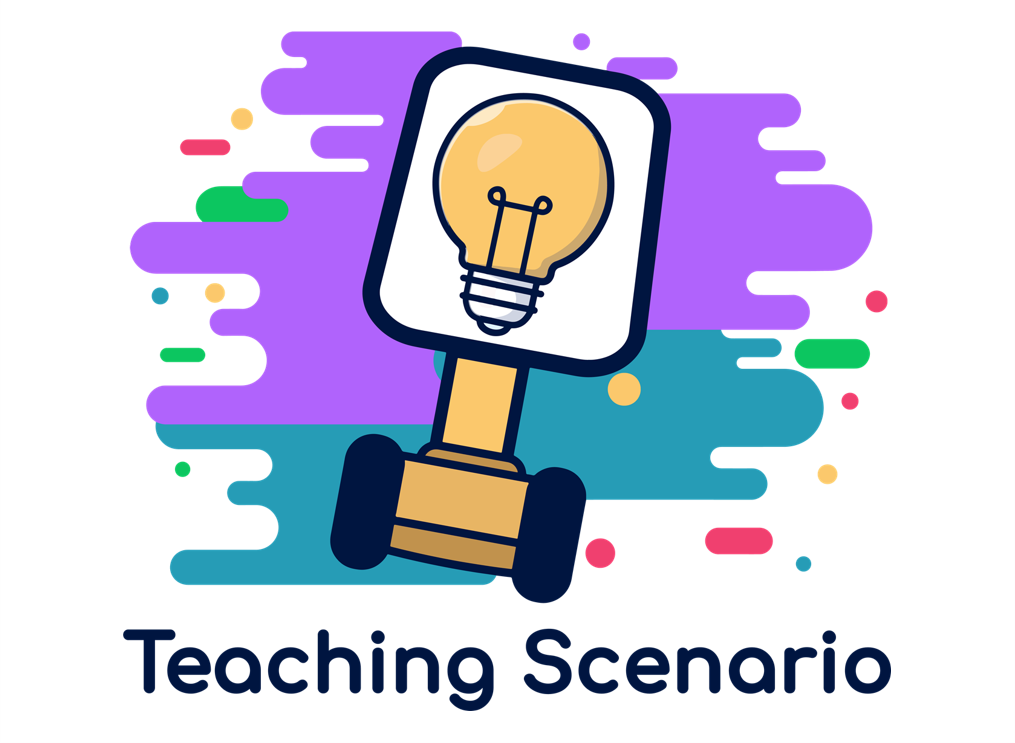
Mock Trial
Educational Level
Higher Education
Student Age
19+
Number of students
40
Lesson duration
4 hours
- Students prepare for a trial depending on their role
- Students familiarise themselves with the case and know what to do
- Students learn to listen to others and figure out what to do next
- Students reflect on their work and the work of other students
Students will know how to:
- activate their prior knowledge
- prepare for a trial according to their role
- play their assigned role
- be a part of a team/group
Wi-fi, cameras, sound system, screen/TV
Students who could not join the class on campus were able to log into TR and be present through a telepresence robot to play their role on the day
Project-based Learning: Students acting out roles or improvising scripts, in a realistic and problematic social or interpersonal situation. Students playing out, either in person, or virtually, a hypothetical social situation that abstracts key elements from reality
Fieldwork: Students learning how to conduct research and make sound professional judgements in real-world situations
Role Plays and Simulations: Students acting out roles or improvising scripts, in a realistic and problematic social or interpersonal situation. Students playing out, either in person, or virtually, a hypothetical social situation that abstracts key elements from reality
Flipped Classroom: In the basic structure of a “flipped classroom,” the students first engage the content online (through readings, video lectures, or podcasts), then come to class for the guided practice.
Lesson Plan
Before the Lesson:
Teacher
- Decide the subject of the trial
- Make role list
- Divide roles between students
- Prepare material for each role group (e.g., judge, defence, prosecutor, witness, defendant
- Post information and guidelines in LMS
- Prepare rubrics for students and post in LMS so that they know how they will be evaluated
- Prepare the setup for evaluation (print rubrics if needed and form for feedback)
- Book a classroom and make sure that everything that is needed is there on the day
- Set up the classroom
- Let students know that if they cannot show up in person, they will have to book TR from the Center of Teaching and Learning
Students
- Read the materials they get
- Prepare for the trial
- Meet in groups and prepare for their case (they get info about the case but not what they should ask/say/do in the courtroom)
- Be sure they know their role and the role of their team/group and are prepared
- Book a TR if they cannot show up for the lesson
Lesson:
Teacher
- Explaining the set up in the classroom for students and where to take place
- Explain how evaluation will take place and what they themselves will be evaluating (self-evaluation and peer review)
- Evaluate every role and make notes for feedback
Students
- Play their individual role but at the same time be a useful member in their team
- Help team members out if they notice something missed or forgotten
After Lesson:
Teacher
- Evaluate the students
- Fill out rubrics for everyone and give feedback
- Re-evaluate the plan and materials for next time
Students
- Evaluate their role, how they did and what they wished now that they did different (self-evaluation)
- Evaluate the other students they were working with (peer review)
Media and materials:
–
Author: HH, University of Akureyri
How did this Teaching Scenario work for you?
Have you tried this or a similar Teaching Scenario?
Feel free to share your experiences with a comment below.
Possible questions for your evaluation of the TRinE Teaching Scenario
- What feedback / reflection was provided by the teacher?
- How is the feedback from the students?
- Why did you decide to use TRs?
- How did the TRs inform your lesson plan?
- What shifts or stretches are you making regarding the TRs?
Does the use of the Telepresence robots:
- align to learning outcomes?
- align to assessment?
- support your educational context?
- differentiate for individual students?
- enhance student thinking by addressing different levels of thinking?
- extend learning authentically beyond the classroom?
- increase engagement and active learning?
- promote and support collaboration?
- provide opportunities to construct knowledge?
Are the students participating / motivated / progressing?
1 Comment
Submit a Comment
Create your Teaching Idea!
1. Read through our TRinE Guide for Teachers to learn more about designing a lesson with a Telepresence Robot. Browse through our TRinE Ideas and get inspired!
2. Download the Word template here to describe and evaluate your teaching scenario.
3. Contact us and send us the form if you want to publish your Teaching Scenario on our website.


Teacher’s reflection: This is a lesson plan you will use at least 5 times during the semester, so students get to experience different roles
Student’s reflection: “The most fun the whole year”
“We learn so so so much from role playing and it is so important to get to do this multiple times to try different roles”
Why did you decide to use TRs? Because some students could not show up due to different reasons
How did the TRs inform your lesson plan? I did not really, Wi-Fi is good in the school and they booked the TR’s themselves
What shifts or stretches are you making regarding the TRs? I allow it to give the student the possibility to fulfil this assignment, but I don’t really have to change anything. We decide the dates with good notice so students can plan ahead
Lesson Plan Evaluation: I do not think that the TR changes anything here really, it allows students to show up and participate but they have to prepare the same way than everybody else.
This way of teaching, role play and flipped classroom does motivate the students and the TR helps if someone is suddenly unable to come to the classroom on the day. Before TR’s students would miss out and their team/group would suffer on the day